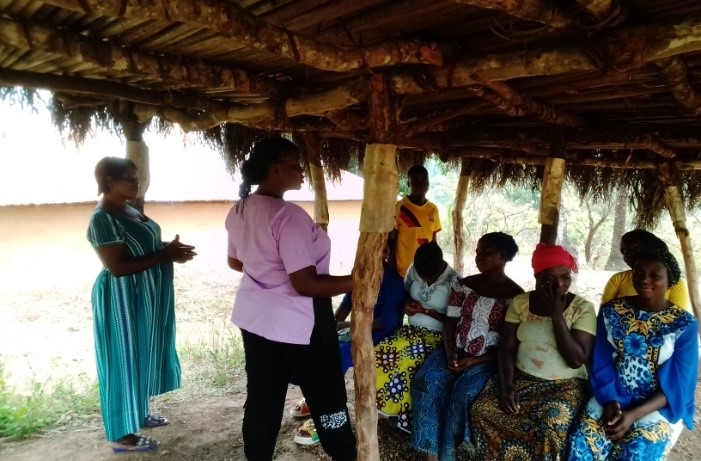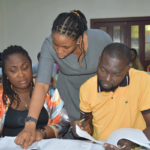Effect of G-ANC to increase Delivery by Skill Birth Attendant in Primary Health Care Centers in 4 Implementing LGAs in Taraba State.
A BPRM IHANN SUCCESS STORY
The BPRM/FHI360 Improving health and integration for the Cameroonian refugees, asylum seekers, and vulnerable populations in Southeast Nigeria project, funded by the United States Department of State (US DOS) in Taraba State, commenced field activities with the conduct of baseline assessments in 15 targeted Primary Healthcare Centers (PHCCs) and community mapping of all the project sites (Angwan Abuja, Angwan Mbakpa, Birama, Kashimbilla, Sabon gida Yukuben, Lissan, Fikyu, Baissa, Eneme, Akwanwe, Ashuku Yerimaru, Nguroje, Inkiri and Antere) The aim of the project is to “promote the wellbeing and safeguard the lives of Cameroonian refugees, asylum seekers, and vulnerable populations in Nigeria G-ANC
Over the years, it has been recorded that pregnant women in rural areas seek antenatal services from local or traditional providers, thereby reducing the number of ANC visits in health care centers. Health education for both maternal and child health services is usually not accessible to these women, who regularly visit TBAs, thereby increasing the probability of maternal and child morbidity and mortality.
The BPRM project, in its bid to strengthen health care services for pregnant women, introduced Group ANC (G-ANC). In this model, pregnant women are grouped in peer groups designed to provide routine ANC services close to them in the facility and community. G-ANC is built on three key objectives:
- Conduct clinical assessment and treatment.
- Use a model of participatory facilitated learning.
- Build and rely on peer support.
- Conduct clinical assessment and treatment.
- Use a model of participatory facilitated learning.
- Build and rely on peer support.


Key principles of GANC include:
- Having a plan and purpose for each session while remaining responsive to group interests.
- Capitalizing on group processes that use non-hierarchical, client-centered, participatory methods.
- Planning for stability of group members and facilitators (ANC providers)
- Providing the widest range of care possible within the group setting
- Promoting empowerment, self-efficacy, reflection, and planned action through specific activities, e.g., clinical self-assessment and activities designed to improve health literacy.
- Promoting peer-to-peer learning, support, group identity, and cohesion.
Criteria for Groupings
Originally, G-ANC groupings were done based on the gestational age of the index pregnancy. If this method is used in areas of implementation, the aim of G-ANC will be defeated because of difficult terrain and long travel times to health facilities for women of the same gestational age to access services. As a result, the original concept was modified, and close proximity was introduced as a criteria irrespective of gestational age for grouping pregnant women within the community. This innovation eliminated the difficulty stated above in accessing care. However, the pregnant women are sub-grouped according to their gestational age based on their location, and the list is handed over to the midwives for follow-up until delivery.
Below are the main advantages of proximity grouping:
- Increased attendance of pregnant women to sessions since it’s within their residence.
- Experience sharing from women with older gestational ages to women with younger gestational ages.
The G-ANC Strategy, DELIVERY by SKILL BIRTH ATTENDANCE has increased by 78% in just over 3 months of implementation. In Takum and Sardauna LGA’s, delivery by skilled birth attendance increased by 92% and 98% respectively



